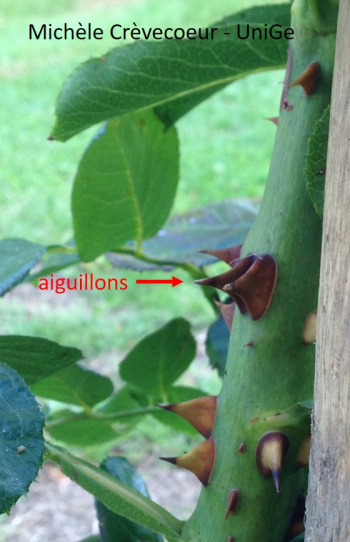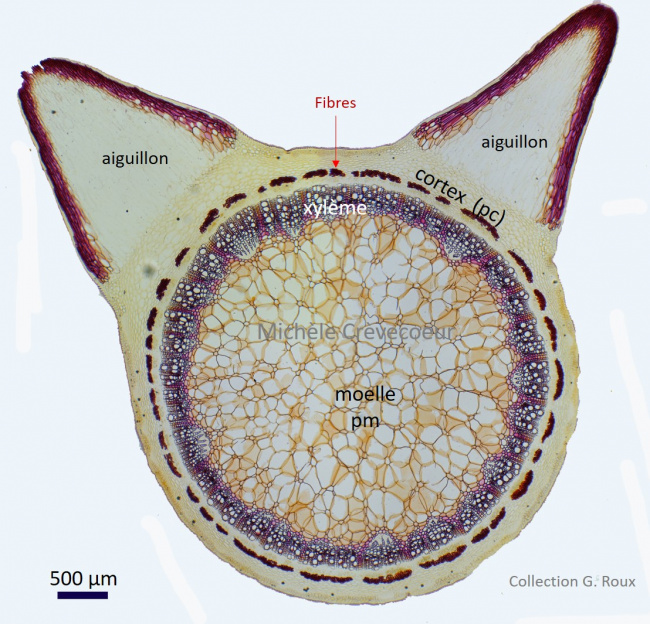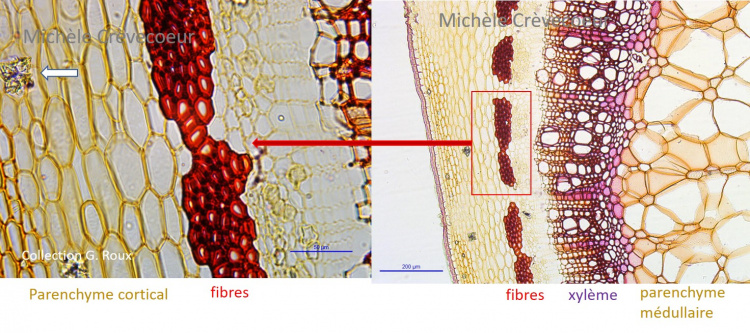Cross section through a stem of « rosa ».
The surface of stems is covered with many pickles (see picture on the right). They differ from spines that are modified leaves. They are modifications of stems and form sharp, pointy protrusions that develop from the epidermis and the cortex. Thy do not break easily and exist to protect plant from being eaten.
The micrographs below illustrate the anatomical characteristics of a stem of a pink flower, scientific name rosebush or wild rose, from Rosaceae family. The species name is not known.
The section that belongs to the collection of Georges Roux has been stained with 1% safranin, 1% crystal violet and 1% orange G » staining known as “Triple staining of Fleming” (Johansen 1940),
The first micrograph illustrates the general aspect of the section with characteristics of a young dicotyledon stem: extensive central pith with large parenchyma cells and a small cortex. The vascular bundles are covered with clusters of fibers and the xylem appears as a blue stained ring at the periphery of the pith. Two prickles are observed on the upper part.


Below, detailed portions of the cross section. On the right, fibers, xylem and parenchyma cells of the pith (medular parenchyma). On the left, fibers stained in red, with thick walls. Druses are observed in different places in the cortex (white arrow).
